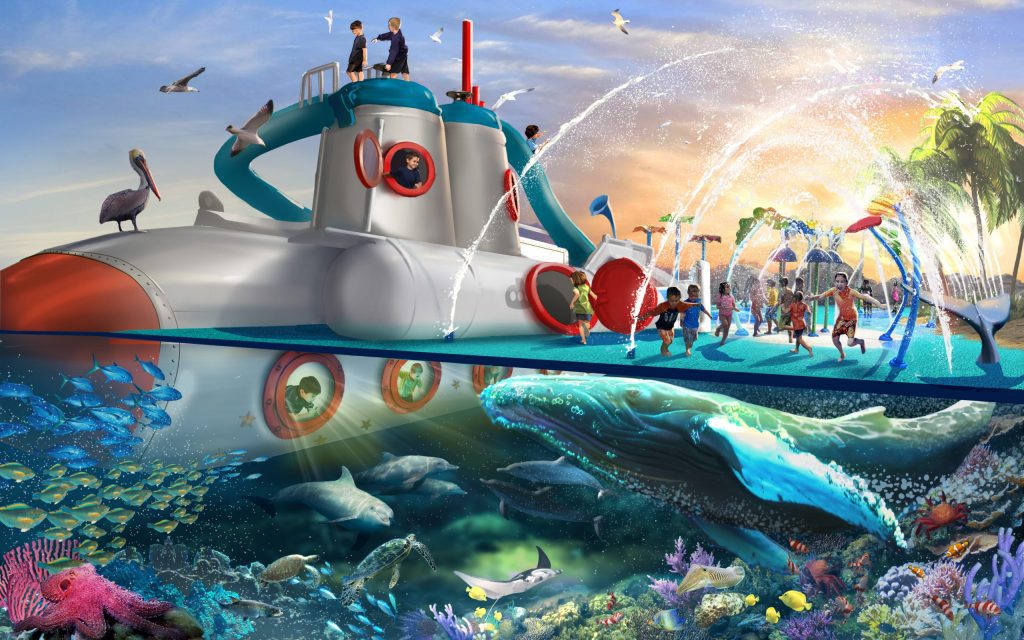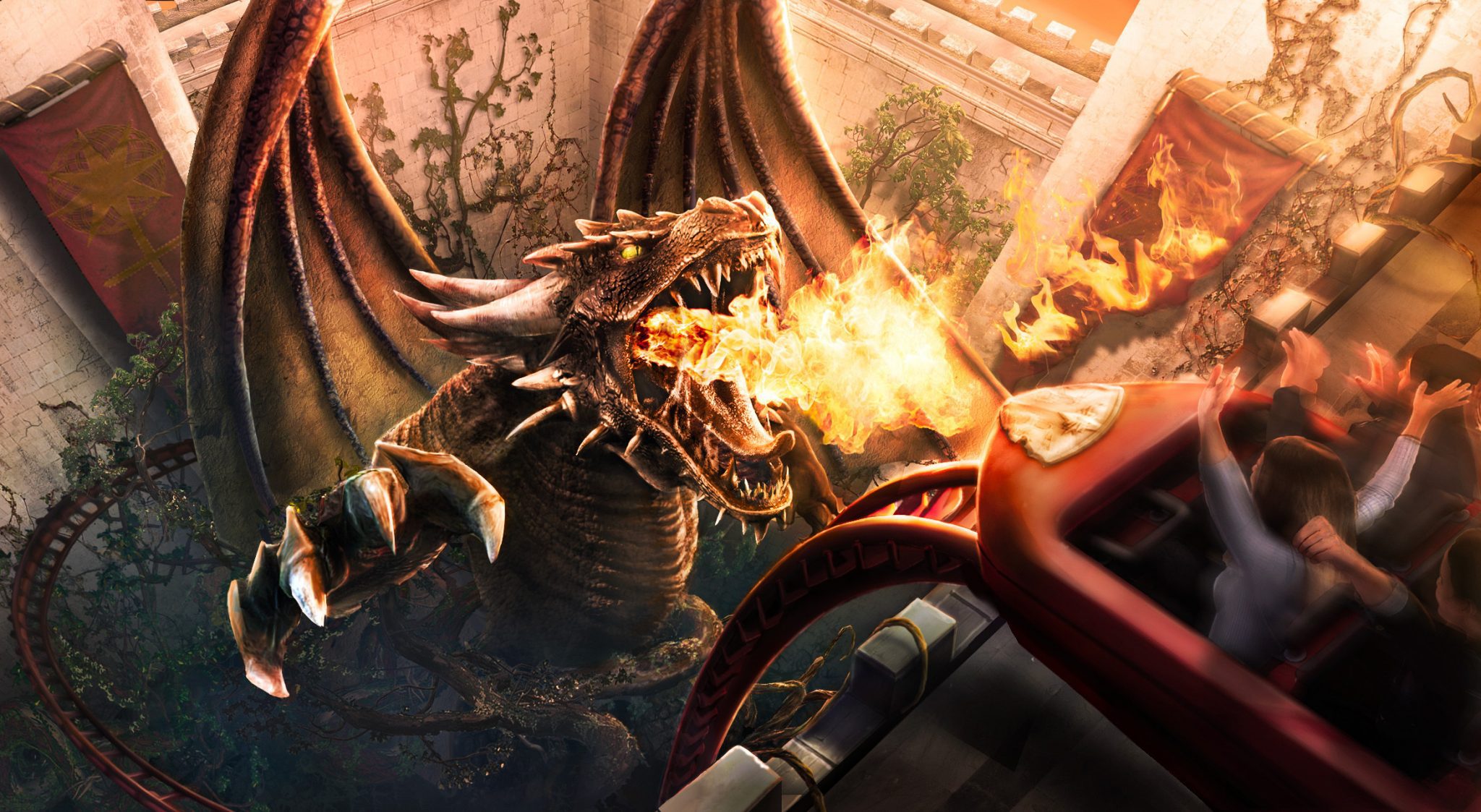By Senior Creative Writer, Diego Cid
As themed project designers, our primary goal is storytelling.
The first part of our creative process is very similar to other disciplines in the entertainment industry, such as the production of animated movies or videogames: First, we write a compelling narrative, then we create a set of interesting characters the audience can feel connected to, and then we place these characters into a historical or fictional context. The aim is to create exciting zones and unexpected situations offer an audience an engaging and emotional experience.
Of course, this is the beginning of a long complex process. Designing a narrative is not the same as successfully relaying it. Eventually, everything we design will get built in the real world; all the fantastic places and events we imagined will have walls and floors, materials and colours, paths and facades that people will be able to see and interact with. At some point our storyline and characters will face a real audience; people of all ages will experience, in first person, the spaces we conceived.
There are many types of themed venues and experiences, and each requires its own design strategy. The sky’s the limit when it comes to stories, but the resources, time, and budget are always very much finite. Each project’s narrative needs careful forethought with regard to these considerations which can dramatically impact the scale of the challenges faced in designing an immersive experience. It’s no use having an amazing story you can’t tell!
In this blog post, I want to look at one particular consideration that straddles the divide between narrative design and masterplanning. That’s the question of whether a story should be told linearly, or non-linearly.
Linear Storytelling
As in books, film, theatre, or video games, the most traditional way to tell an audience a story is with a sequential structure. Here, storytellers have absolute control of timing and conditions; they have the opportunity to brief an audience in advance, set the mood, and determine the rhythm, orchestrating exactly when and how the beats should happen.
The archetypal example of linear storytelling in themed entertainment is the dark ride.
A dark ride is an immersive experience with a beginning, middle, and end. Ordinarily, it’s basic — and linear! — structure includes:
- An entrance gate, where the look, feel, and brand (or IP) of the ride can be established.
- A queue line, where theming, graphics, and media work to set the mood and build anticipation.
- A pre-show. Normally, this is a room where guests enjoy an audiovisual introduction to the story and its characters.
- The boarding area, where guests board the ride vehicle.
- The ride experience: the core attraction, where guests are taken between sequential stages with sets, props, and lighting, often enhanced by special effects, multimedia technology, animatronics, and so on.
- The exit, which could include a post-show. This is sometimes connected to a retail area, a food and beverage location, or both.
Here’s my best creative advice when bringing linear storytelling to life in a dark ride:
- A good ride, as with a good movie, must have a well-structured script including a good introduction to the story, world, and characters, and an engaging emotional throughline.
- Create a powerful entrance; the storyline begins here.
- Pay attention to your queue line. You can do a lot with a dynamic and fun queue area, guests will spend more time in the queue than enjoying the ride, so it’s a perfect time to introduce or develop the story.
- The ride must have a correct rhythm and sequence of stages. Dedicate one stage per key story beat or scene. Make sure it’s clear and easy to understand.
- Use rich and detailed theming in every scene, providing more detail the guests can see at first glance. This makes the ride more absorbing and increases repeatability.
- Use sound, lighting, and effects wisely. Darkness and silence are also powerful storytelling tools.
- Creating a compelling finale which will leave a long-lasting impression on the audience.

Non-Linear Storytelling
But not all stories need to be told using this unidirectional structure, especially in themed entertainment.
Also called ‘open-layout’ or ‘environmental’ storytelling, non-linear storytelling in our industry uses a combination of visual language, imagery, signage, buildings, and landscaping to create a narrative that visitors can explore at their own pace, deciding where to focus and when.
Theme Parks, Family Entertainment Centres, and Themed Restaurants regularly host fantastic examples of this sort of narrative. In these spaces, guests can come and go as they please throughout the day, circulating freely and interacting with story elements at will. This sort of experience is less about a specific storyline and more about the look and feel, historical or fictional world, and atmosphere.
While environmental narratives can be less intense in terms of emotions and thrill, they can be powerfully immersive and sustain the suspension of disbelief even longer than rides. Sequential attractions are designed to entertain the audience for only a few minutes, while themed environments can maintain a narrative passively and without time restrictions.
Additionally, themed destinations will usually contain stage shows and rides which work with sequential narrative, offering guests a mix of mediums from across the storytelling spectrum, all at once!
For me, the best creative advice when bringing environmental storytelling to life is as follows:
- A good themed area must be properly planned. It must be inviting and surprising, must consider scale and perspective, and keep a consistent level of detail across all areas.
- The design must minimise the non-diegetic elements — those that don’t belong to the story — and hide them away from the visitors once they’re in the themed area. Things like parking lots, regular or BOH buildings, and service infrastructure can break the suspension of disbelief; we want to maintain this throughout the guest journey.
- Architectural style, facades, pavements, constructive elements, and landscape must be aligned with the narrative.
- Safety and accessibility have to be a main concern too, but they should blend into the theme to preserve the look and feel.
- Signage, especially wayfinding, plays a key role in the navigation and the understanding of how the zones and their contents fit into the broader narrative.
- Technology and interactivity can be incorporated but must be used wisely and only when justified by narrative.
Ultimately, we want the themed environment to provide guests with enough detail and narrative information to put the full story together by themselves while also leaving room for their imagination to complete it. This kind of storytelling works best when guests feel as though they are protagonists themselves.
In the realm of Themed Project Design, the choice between linear and non-linear storytelling is pivotal. Linear narratives, as found in dark rides, demand a well-structured script and thematic elements. Non-linear storytelling, prevalent in theme parks, allows visitors to explore narratives at their own pace. For linear storytelling, emphasise a robust entrance, queue lines, rhythmic sequences, and a compelling finale. Non-linear narratives require meticulous planning, maintaining thematic consistency, minimising non-diegetic elements, and using signage effectively. Ultimately, both approaches flourish with creative planning, striking a delicate balance between structure and freedom.

